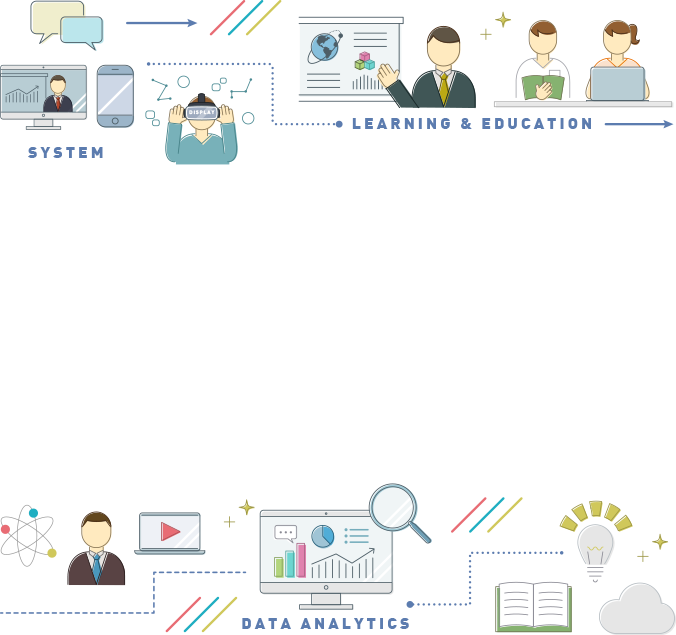My name is Saki Hirata, a second-year of master student.
In this English seminar, we read the following paper.
Title:Effects of Technological Interventions for Self-regulation: A Control Experiment in Learnersourcing
Authors:Hatim Lahza, Hassan Khosravi, Gianluca Demartini, and Dragan Gasevic
Conference:LAK22(The 22nd International Conference on Learning Analytics and Knowledge)
https://dl.acm.org/doi/abs/10.1145/3506860.3506911
This is a paper presented at LAK, a leading international conference on educational technology.
The content of the paper is a study of the effects of adding a function to support self-regulated learning to “learner sourcing”, a platform on which learners themselves post quizzes and other learning content.
While “learner sourcing” is recognized as an effective learning environment, it has been reported that the quality of content posted there varies widely.
Therefore, in this study, a learner sourcing interface based on a self-regulated learning strategy was developed to support learners’ content creation.
Self-regulated learning refers to the ability of learners to regulate their own learning, and it is considered that this ability can help learners to create learning content of a certain quality.
In the learning system, learners create quizzes and post them on the board. In addition to this functionality, an interface was added to the system to assist with content creation based on the self-regulated learning theory.
Three specific support functions were created: “planning,” “monitoring,” and “self-assessment” modules.
In the planning function, the necessary steps for content creation are indicated, and questions are presented at each step for confirmation of the necessary steps.
The monitoring function supports performance monitoring by determining, based on a checklist, whether content has been created that meets creation requirements based on the multiple-choice question creation manual.
The self-assessment function encourages learners to review content after it has been created, helping them to create and revise content of higher quality. Specifically, the function allows learners to rate their own content on a 5-point scale according to questions, and to freely describe how they would improve their content.
In this study, a field experiment was conducted with 797 university students to test the effectiveness of a system integrating self-regulated learning support functions. To verify which support functions were effective, subjects were classified into five groups: “no support functions,” “one support functions (out of planning, monitoring, or self-assessment),” and “all support functions.
The analysis examined each group’s “learning behavior,” “learners’ perceived usefulness of the system,” and “the impact of self-regulated learning support functions on the quality of learning content.”
Mann-Whitney U-tests, process mining (PM) and Markov process models (FOMM), and Pearson’s correlation analysis were used as analytical methods.
The result of learning behavior revealed that the group with the self-regulated learning function spent significantly more time on content creation. In addition, the results of the questionnaire regarding the effectiveness of learning revealed that the “no support functions” group perceived their learning to be the most effective.
On the other hand, with respect to the “with planning” and “with all support functions” groups, a smaller percentage perceived the system to be effective for learning, and negative comments were made about the system.
Furthermore, the results of the test on the quality of content for all students showed no significant differences between any of the groups.
This indicates that the function of self-regulation learning aids tended to complicate the task procedure and increase the time spent on each task, and that self-regulation learning aids did not have a significant impact on learning performance in this study.
As reasons for this result, it was suggested that students may have lacked the existing knowledge to effectively use self-regulation learning aids, and that technology issues, such as time lags in page loading, may have reduced their participation in learning.
What follows are my impressions of this paper.
First, I chose this paper because I wanted to use it as a reference for my own research regarding evaluation methods and self-regulation learning support. After reading this paper, I once again felt that it is not easy to support learners’ self-regulated learning behavior. In the seminar, it was pointed out that learners with high self-regulation learning tend not to use support functions, while support functions are effective for learners with low levels of self-regulation learning, and I recognized the need to consider how the system should be according to learners’ prior knowledge and learning achievement levels.
Since this paper is published in a top journal called LAK, I believe that the experimental methods and statistical techniques will be very helpful. By reading high-standard international journals, I would like to apply the statistical methods practiced there to my own research!







